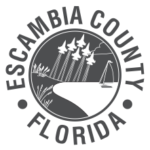Hurricanes: An Overview
A hurricane is an intense tropical weather disturbance that occurs in the ocean when sustained winds reach 74 miles per hour or more. Hurricanes thrive in waters with a temperature of at least 80 degrees Fahrenheit, combined with a moist environment and non-shearing winds in the upper atmosphere, which allow the hurricane to grow vertically.
Commonly, hurricanes move throughout a large and elevated pressure system called a Bermuda High, which is characteristic for the mid-Atlantic region of the United States; however some hurricanes can be difficult to forecast due to its unpredictable path.
Since 1953 hurricanes have been given names to keep track of storms occurring at the same time. In 1979, male names were added to the register, which is comprised of six annual lists that are rotated every six years. If a tropical storm or hurricane causes notable death or destruction, the name will no longer be used for future storms.
Storm surge is an abnormal rise of water generated by a storm, beyond the predicted tide levels. This rise in water level can cause extreme flooding in coastal areas particularly when storm surge coincides with normal high tide, resulting in storm tides reaching up to 20 feet or more. It is important to understand the risks of a hurricane storm surge and heed the warnings and evacuation orders given by local emergency management officials.
